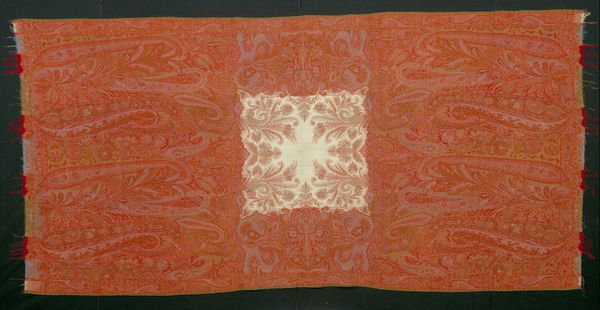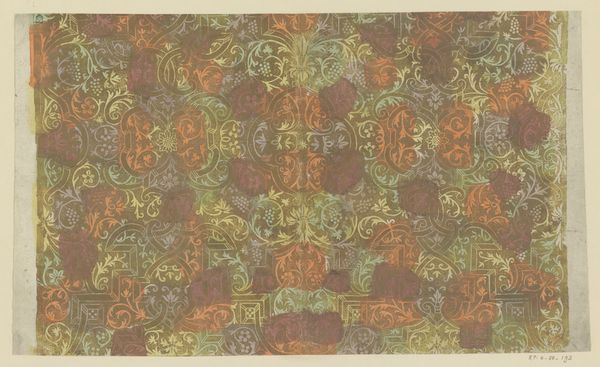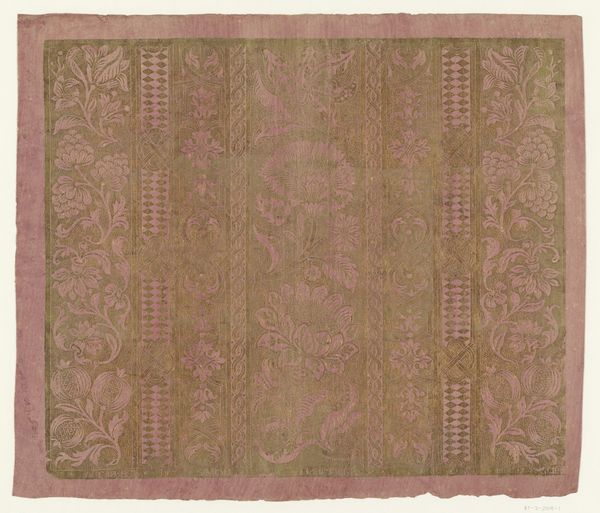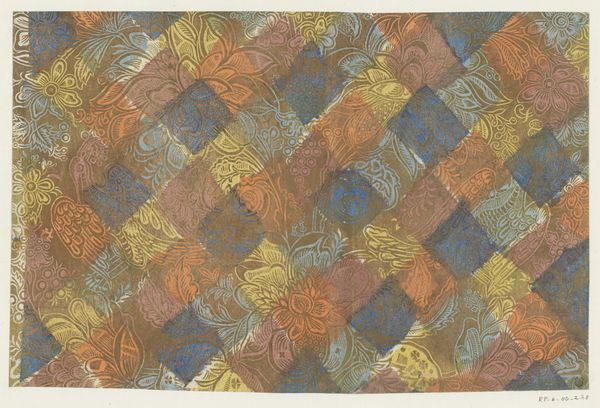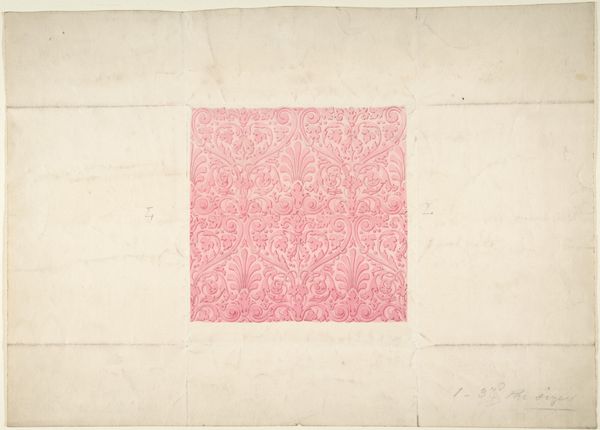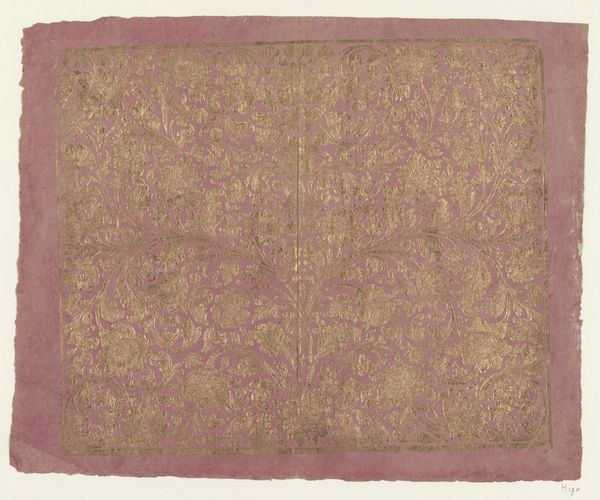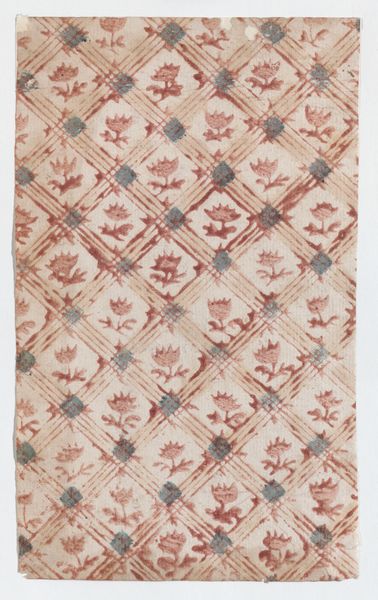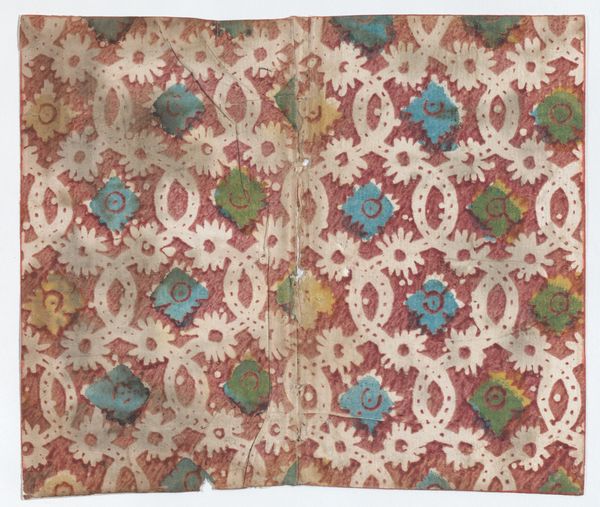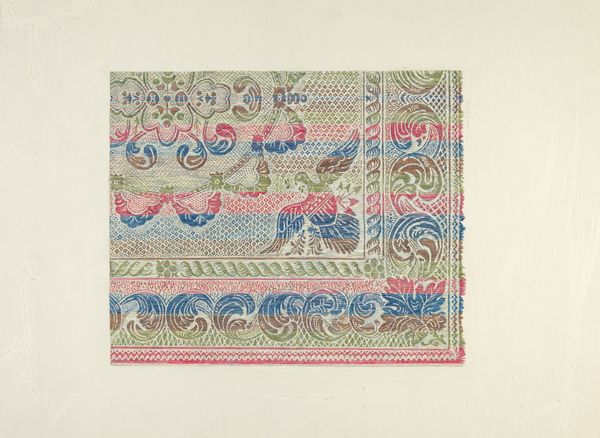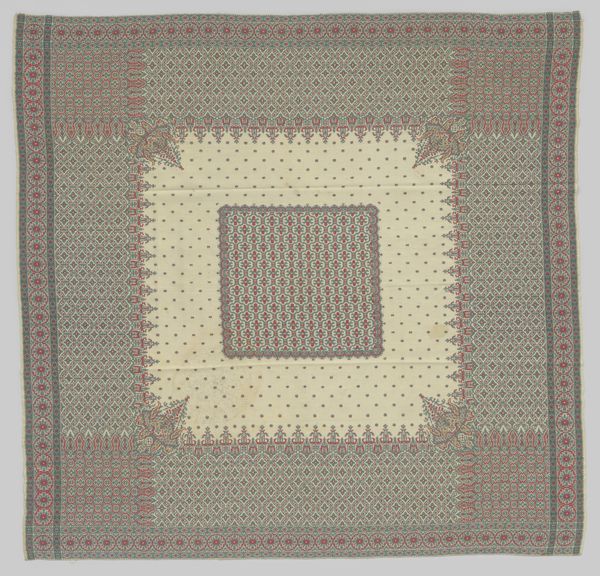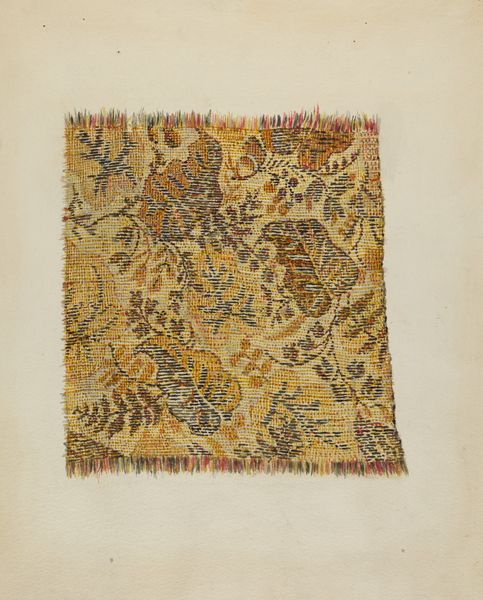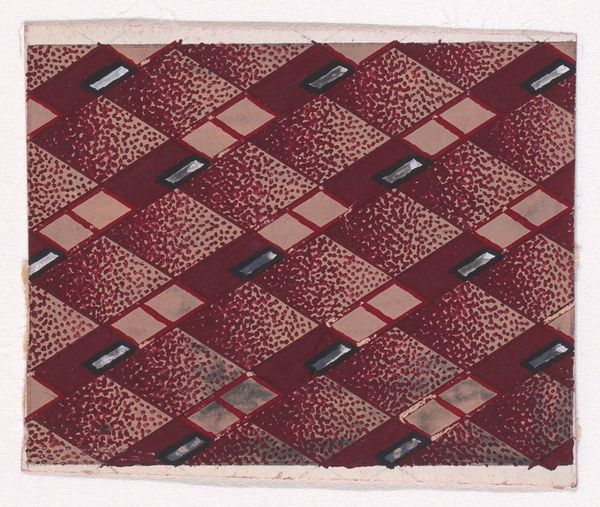
Langwerpige sjaal met rechthoekig veld waarin een vierkante witte spiegel met slanke palmmotieven, de randen bestaan uit S-ranken met lelies en palmetten c. 1840 - 1844
0:00
0:00
fibre-art, silk, weaving, textile
#
natural stone pattern
#
fibre-art
#
naturalistic pattern
#
silk
#
weaving
#
textile
#
hand-embroidered
#
pattern background
#
organic pattern
#
pattern repetition
#
textile design
#
imprinted textile
#
layered pattern
#
organic texture
Dimensions: length 344 cm, width 162 cm
Copyright: Rijks Museum: Open Domain
Editor: This piece, dating from around 1840 to 1844, is described as a long scarf made with weaving techniques. I'm struck by how this rectangular field features a symmetrical white "mirror" framed with delicate palm motifs... What is significant about it to you? Curator: Well, it is important to examine this textile within the context of the rise of Orientalism in the West, particularly during the Romantic era. The "palm motifs" and overall symmetrical design evoke a romanticized vision of the East. How do you think the cultural and political relationships of the time might have impacted its reception? Editor: So, the people seeing and using the scarf had specific cultural values that framed their view of it? How so? Curator: Absolutely. Colonization, trade, and artistic exchange created a complex power dynamic. Wealthy Westerners would often commission or acquire items like these as symbols of their worldliness and access to exotic cultures. Does knowing this make you think differently about the textile? Editor: It does. It reframes what I see; the piece now strikes me as something with more encoded politics than I first thought. It prompts questions about its origins. Curator: Exactly. Consider where the materials came from and who made it. What kind of labor went into producing it? And how would knowing that production context change its cultural value again? Editor: Wow, that gives me so much more to think about. What appears purely decorative becomes quite charged. I see that something’s beauty does not preclude a fraught cultural and historical existence. Curator: Precisely. I've certainly enjoyed hearing you reflect. Thank you!
Comments
No comments
Be the first to comment and join the conversation on the ultimate creative platform.
